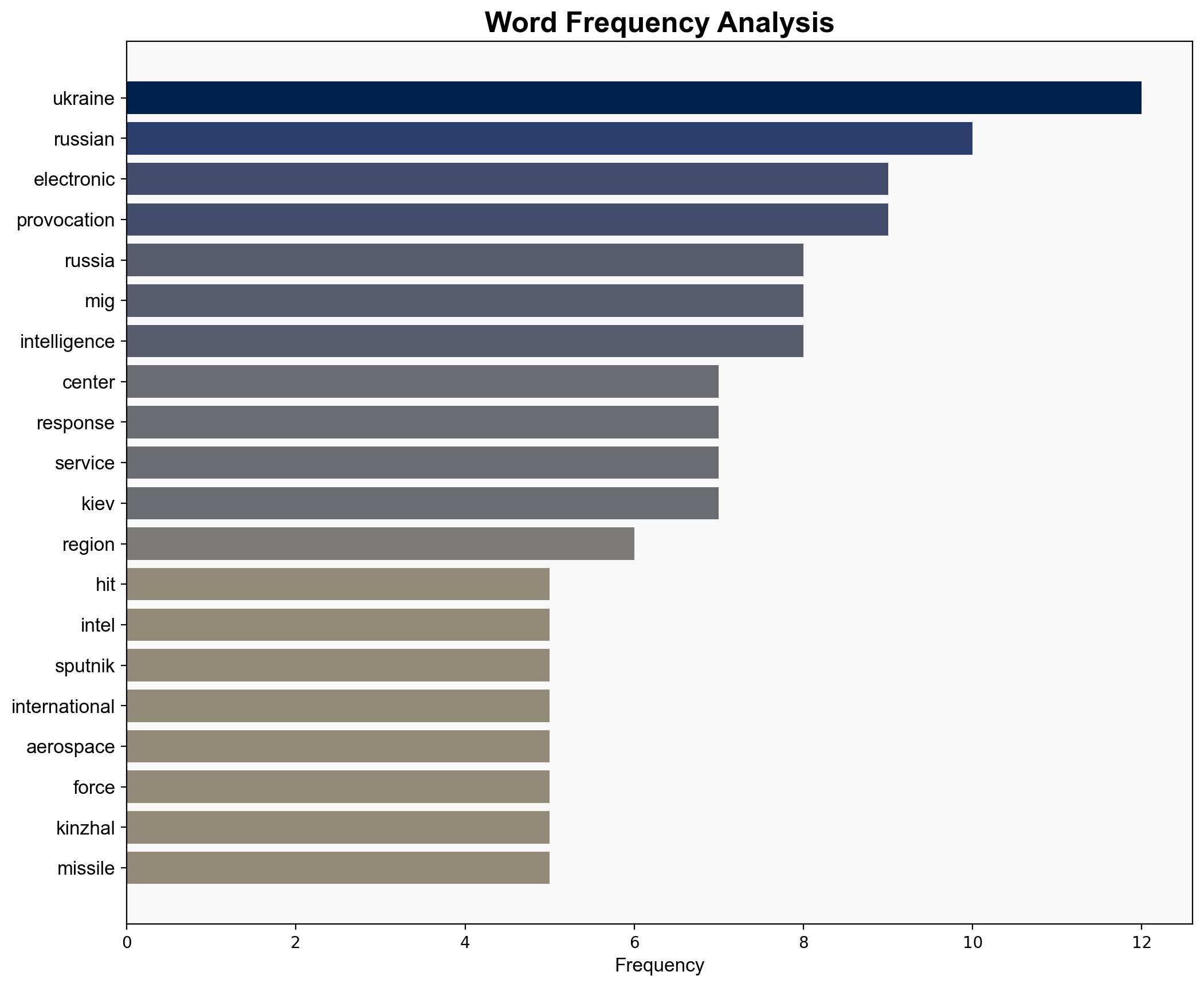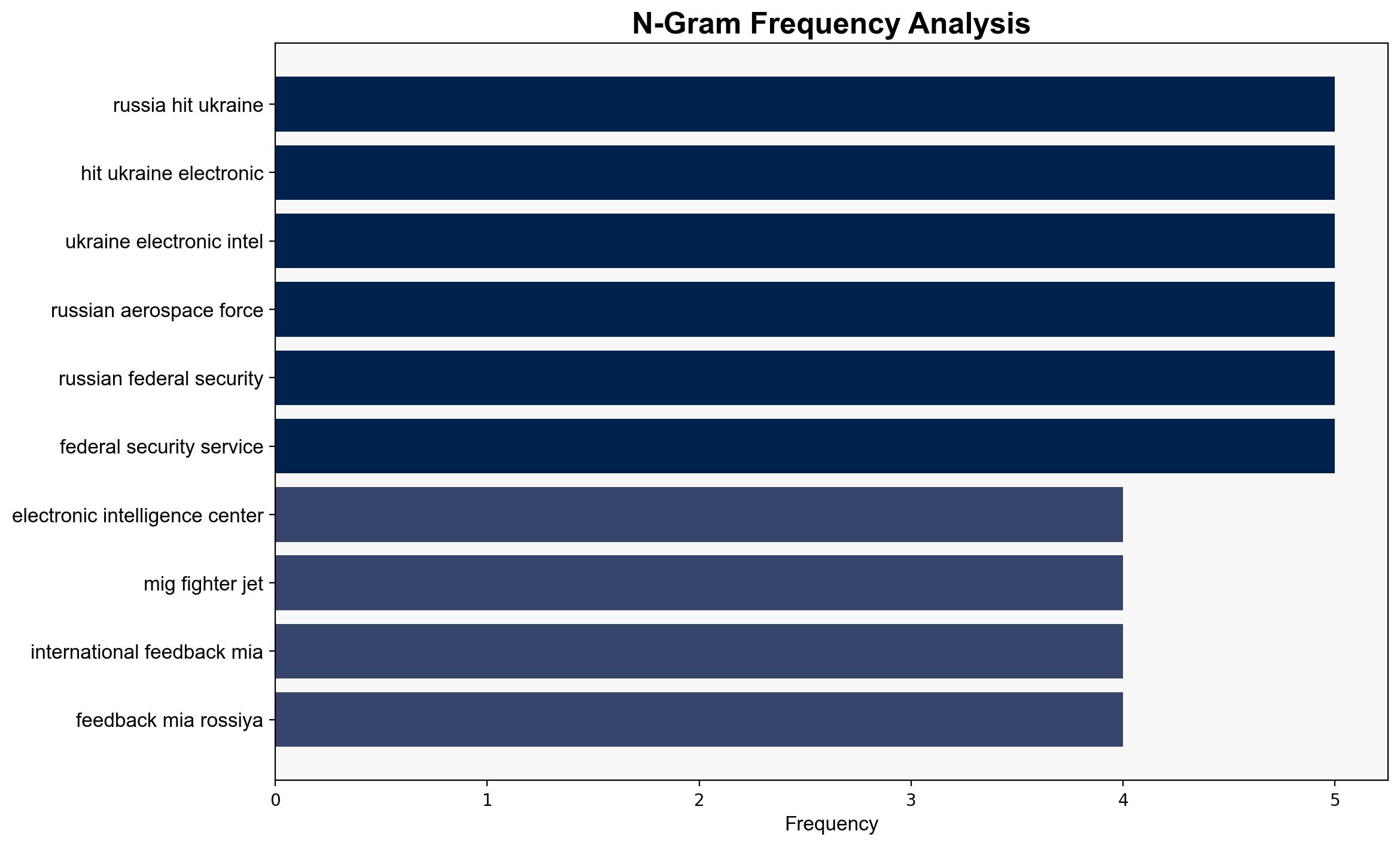Russia Hits Ukraine’s Main Electronic Intel Center in Response to MiG-31 Provocation – Sputnikglobe.com
Published on: 2025-11-11
AI-powered OSINT brief from verified open sources. Automated NLP signal extraction with human verification. See our Methodology and Why WorldWideWatchers.
Intelligence Report: Russia Hits Ukraine’s Main Electronic Intel Center in Response to MiG-31 Provocation – Sputnikglobe.com
1. BLUF (Bottom Line Up Front)
With a moderate confidence level, the most supported hypothesis is that Russia’s strike on Ukraine’s electronic intelligence center was a preemptive measure to counter a perceived threat from Ukraine’s alleged plan to hijack a MiG-31 fighter jet. Strategic recommendations include enhancing intelligence-sharing among Ukraine’s allies and increasing vigilance for potential Russian disinformation campaigns.
2. Competing Hypotheses
Hypothesis 1: Russia’s strike was a direct response to credible intelligence of Ukraine’s plan to hijack a MiG-31, aiming to neutralize a potential threat.
Hypothesis 2: The strike was a strategic move by Russia to justify its military actions and maintain pressure on Ukraine, using the alleged provocation as a pretext.
Hypothesis 1 is more likely given the specificity of the alleged provocation and the use of advanced weaponry, suggesting a targeted response. However, the lack of independent verification of the hijack plan introduces uncertainty.
3. Key Assumptions and Red Flags
Assumptions include the credibility of the FSB’s intelligence on the hijack plan and the effectiveness of the strike in achieving its objectives. Red flags include potential bias in the source (Sputnik), which may reflect Russian state interests, and the absence of corroborating evidence from independent sources, raising the possibility of a disinformation campaign.
4. Implications and Strategic Risks
The strike could escalate tensions, leading to increased military engagements and cyber operations. Politically, it may strain diplomatic efforts for conflict resolution. Economically, it could disrupt regional stability, affecting energy markets. Informationally, it risks fueling propaganda and misinformation, complicating public perception and policy responses.
5. Recommendations and Outlook
- Enhance intelligence-sharing and verification mechanisms among Ukraine’s allies to counter potential misinformation.
- Increase cybersecurity measures to protect critical infrastructure from retaliatory cyberattacks.
- Best-case scenario: De-escalation through diplomatic channels and verification of the alleged provocation.
- Worst-case scenario: Escalation into broader military conflict, involving NATO and regional actors.
- Most-likely scenario: Continued tit-for-tat actions with limited diplomatic engagement.
6. Key Individuals and Entities
Russian Aerospace Force, Federal Security Service (FSB), Ukrainian Intelligence Service.
7. Thematic Tags
Regional Focus: Eastern Europe, Russia-Ukraine Conflict, Military Strategy, Cybersecurity, Information Warfare.
Structured Analytic Techniques Applied
- Causal Layered Analysis (CLA): Analyze events across surface happenings, systems, worldviews, and myths.
- Cross-Impact Simulation: Model ripple effects across neighboring states, conflicts, or economic dependencies.
- Scenario Generation: Explore divergent futures under varying assumptions to identify plausible paths.
Explore more:
Regional Focus Briefs ·
Daily Summary ·
Methodology





